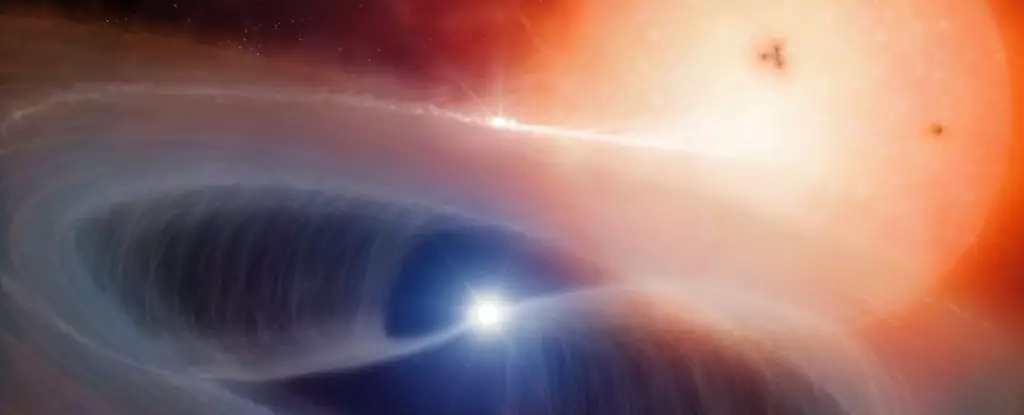For centuries, humanity has looked to the cosmos and wondered about the origins of the elements that make up our universe. Among these mysteries, metal production stands out, originating from cataclysmic stellar events. Scientists understand that metals are produced in supernovae, but the specific types of supernovae responsible and the mechanisms behind these cosmic furnaces have remained less clear. Recent research has thrown new light on this issue, specifically focusing on Type Ic supernovae, which are known for their lack of hydrogen and helium in the ejected material. Understanding the circumstances surrounding these spectacular explosions offers deeper insights into stellar evolution, elemental production, and the interconnectedness of the cosmos.
Type Ic supernovae arise from the collapse of massive stars that have exhausted their nuclear fuel. At this critical stage, hydrogen and helium are depleted, leaving heavier elements to dominate. This scarcity of lighter elements in Type Ic supernovae has long baffled astronomers, prompting inquiries into their progenitor stars. While early theories suggested only the most massive stars contributed to these explosions, research led by a team of astronomers from Adam Mickiewicz University reveals a more complex reality: many of these progenitors are moderately massive stars engaged in binary interactions.
These stars, rather than being mighty singular giants, often exist in pairs with one partner siphoning away the lighter elements from the other. This binary interaction significantly alters the fates of the stars, influencing not just their lifespans but also the types of elements that can be created in their explosive ends. The realization that these stellar companions play such a crucial role marks a paradigm shift in our understanding of stellar life cycles and supernova mechanics.
Astrophysical models have traditionally focused on massive, solitary stars as the prime candidates for Type Ic progenitors. However, the work of Martín Solar and Michał Michałowski has revealed that the dynamics of binary star systems are pivotal in shaping the outcomes of these stellar explosions. In this model, a less massive star in a binary system can shed its outer layers—rich in hydrogen and helium—thanks to intense gravitational interactions with its partner.
This companion star generally survives the catastrophic event but is often ejected into space at high speeds, providing an intriguing picture of stellar evolution post-explosion. Such revelations not only contribute to the understanding of Type Ic supernovae but may also have profound implications for our knowledge of how elements are distributed throughout the universe.
Analyzing Molecular Clouds and Stellar Life Cycles
To decipher the nature of Type Ic supernovae, researchers utilized observational data from powerful telescopes, examining molecular gas left in the aftermath of past explosions. The presence and density of molecular hydrogen in these remnants serve as indicators of the exploded star’s mass. A higher molecular hydrogen content suggests that the progenitor star was relatively massive but not in the extreme upper mass range previously assumed.
In a groundbreaking comparison, the team evaluated the molecular remnants of Type Ic supernovae against those resulting from Type II supernovae. The results indicated a remarkable consistency in hydrogen levels, affirming that many Type Ic progenitors were indeed less massive stars significantly shaped by close binary interactions.
The findings from this research are far-reaching in implications. The production of heavy elements, particularly carbon—a fundamental building block for life—is known to increase significantly in supernovae involving binary stars. As Type Ic events are confirmed to contribute carbon to the interstellar medium via their explosive ejecta, astronomers can now reassess and refine their models of elemental formation in the universe.
Moreover, understanding these stars’ complex evolution and the role of binary interactions provides a clearer picture of how star formation and explosive deaths impact galactic development and composition. Future observations that include a broader dataset of supernova remnants will further enhance our comprehension of the factor variability in different stellar environments, potentially unveiling relationships between the features of host galaxies and the life cycles of their stellar populations.
As scientists continue to delve into the mysterious origins of elemental abundance in the universe, the study of supernovae, particularly Type Ic and their progenitors, stands at the frontier of astro-research. With advanced telescopes and innovative observational strategies, researchers like Michałowski aim to uncover more about the evolutionary paths of stars and the physical mechanisms fundamental to stellar explosions. This ongoing quest not only elucidates how the universe creates and recycles elements but also enriches our understanding of the cosmic tapestry within which life itself emerged. The future of astrophysical research promises to yield even more surprising revelations as we seek to understand our celestial environment.


Leave a Reply